MURFREESBORO, Tenn. — Middle Tennessee’s exploding growth poses increasingly thorny challenges that were discussed recently in a sobering forum co-hosted by Middle Tennessee State University’s Jennings and Rebecca Jones Chair of Excellence in Urban and Regional Planning and the nonprofit Cumberland Region Tomorrow.
“A Forum on Growth and Challenges in Middle Tennessee” featured an overview of the region’s growth and development from Michael Skipper, executive director of the Greater Nashville Regional Council, followed by a Q&A featuring area mayors Paige Brown of Gallatin, Ken Moore of Franklin and Joe Pitts of Clarksville that was moderated by The Tennessean’s David Plazas, opinion and engagement director for the USA Today Network Tennessee.
In welcoming the hundreds in attendance inside the James Union Building’s Tennessee Room, Joyce Heames, dean of MTSU’s Jones College of Business, said she hoped the inaugural forum would be “the first of many to come on such an important topic … for one of the fastest growing areas in the United States.”
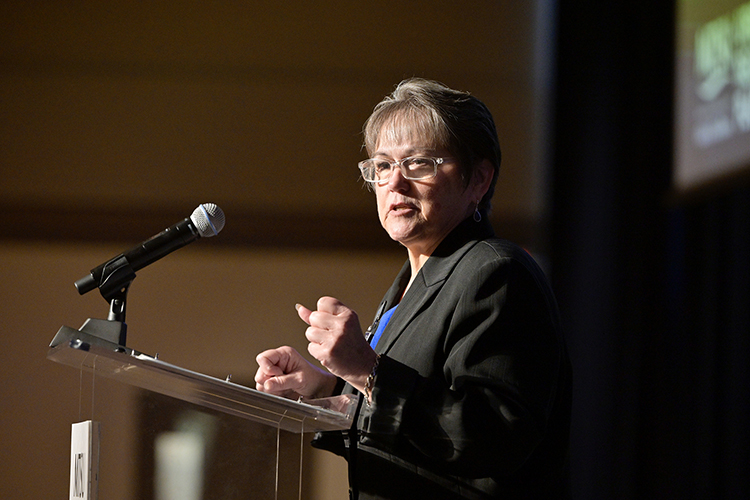
Heames then joked that she was part of the problem, having moved to the Midstate last July from Georgia to take the helm of the Jones College but quickly understanding the region’s attraction to the tune of 3,000-plus new residents moving in each month between 2010 and 2020.
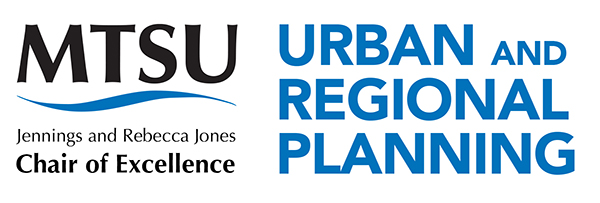
“I have lived across the Southeast, from Mississippi to Alabama to West Virginia, and I have never felt at home so quickly as I did to moving to Murfreesboro, Tennessee,” she said, adding that she’s proud to lead the No. 1 producer of business talent in the Greater Nashville area via the hundreds of Jones College graduates each year, many of whom stay in the region and state.
She also pointed to MTSU’s $1.4 billion overall annual economic impact to the state, as calculated by MTSU’s Business and Economic Research Center, as a catalyst for the region’s growth. She applauded BERC Director Murat Arik, also holder of the Chair of Excellence in Urban and Regional Planning, who coordinated the forum as a part of his mission as COE-URP chair.
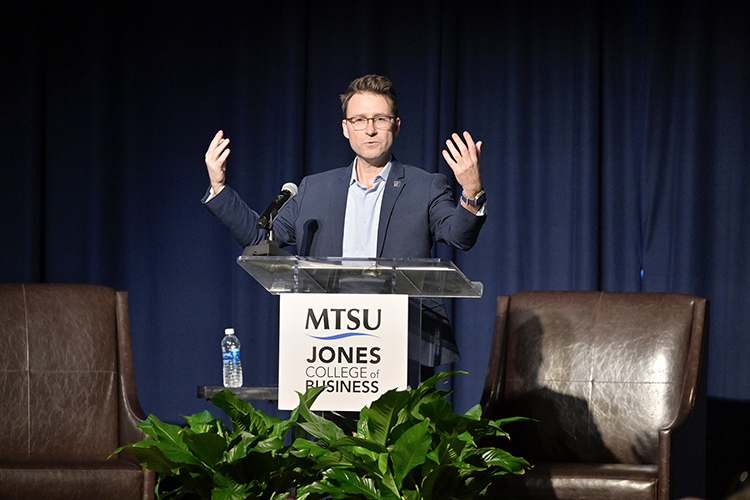
‘There’s a lot of change happening’
Plazas told the audience that such a forum was important because the growth “isn’t stopping,” and that his journalistic work writing about transportation and housing issues in the region was informed by the research from the Greater Nashville Regional Council forecasting future growth and the resulting difficulties that could arise without proper planning and action.

And it was the GNRC’s Skipper who put the region’s situation into context at the beginning of the forum with a slide presentation quantifying the significant challenges and opportunities arising from an ongoing population boom and the various ripple effects that causes in areas such as traffic congestion, lack of affordable housing, dwindling public green space, infrastructure needs and a coming solid waste disposal crisis if recycling isn’t embraced to a much greater degree.
“There is a lot of change happening,” said Skipper, before asking the audience a series of questions about their interest in topics such as growing commute times, protecting agricultural space and finding a solution to shrinking landfill space.
Skipper used a series of charts, graphics and maps to show how the arrival of approximately 400,000 new Middle Tennessee residents over the past decades (22% increase) is impacting a variety of areas based on GNRC’s 25-year forecast to the year 2045:
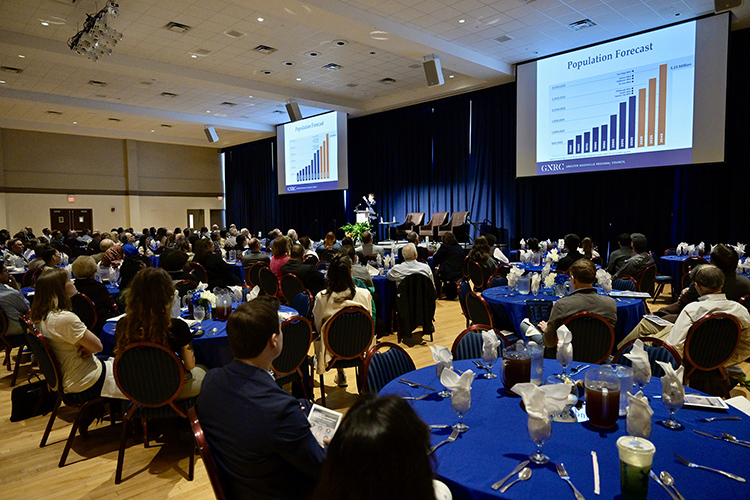
• Population: By 2045, the region is projected to have a population of 3.23 million residents, roughly the same size as the San Diego, California, metro area and larger than the metro areas for Denver, Colorado, Baltimore, Maryland, and St. Louis, Missouri.
• Uneven growth: 72% of Middle Tennesseans live in a municipality of 50,000 residents or more. “So many of our neighboring communities in Middle Tennessee are facing population losses. … Population loss can be pretty devastating to a community’s tax base, to their older populations as kids move away from home, leading to a sense of isolation … A challenge of prosperity is that we don’t forget about our rural neighbors,” Skipper said.
• Traffic/transportation: By 2045, commuters could see a 103% increase in miles traveled within congested conditions with a 14% decline in average travel speeds. That’s significant since 1 in 3 Midstate residents live in one county and work in another.

“We’re noticing our congestion not only getting more severe on routes that are already congested, but more widespread. So today your main way to deal with congestion is to find an alternate route, but in the future the alternative route may be equally congested than the route you’re trying to avoid today,” Skipper said.
Skipper noted that while there’s a 25-year plan proposing the investment of $10.5 billion in transportation infrastructure in the Nashville metro area, that amount is last among 15 peer regions across the country for funding per capita and well behind proposed funding for the metro areas of Denver, Atlanta and Austin, Texas, whose proposed funding is 607%, 301% and 204% more respectively.
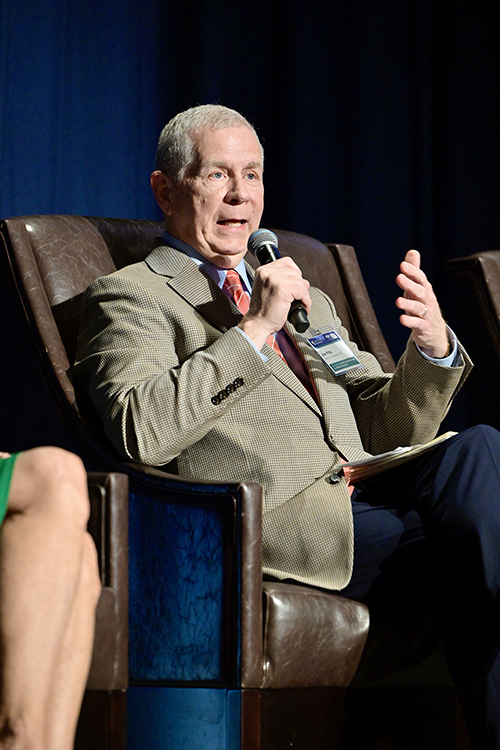
“The missing ingredient in these financial plans doesn’t tend to be the federal funds, which flow to communities based on population and other metrics, it tends to be local skin in the game. It’s the local dedicated funding to support transportation that really elevates the opportunities to solve the problem,” Skipper said, noting that is hard to vie for those discretionary dollars if there’s not local dollars committed to maintain developed transportation solutions.
And because the Nashville metro 25-year plan focuses so heavily on expanding the current highway system, it is actually projected to make traffic congestion worse by inducing demand, Skipper said.
“We have to diverse the ways that people can get around,” he added.
Solid waste is a regional issue
• Solid waste: Skipper noted that Midstate residents generate 2.6 million tons of solid waste each year, an average of 6.2 pounds daily, compared to the U.S. average of 4.9 pounds daily. Meanwhile, the state of Tennessee is ranked 48th in the country for recycling with a 5% recycling rate. That rate would have to double just to become the 41stranked state. The top five states recycle more than 45% of recyclable materials.
Meanwhile Middle Point Landfill, which takes in most of the region’s solid waste, is reaching the end of its life cycle and efforts to expand it have been blocked. Skipper noted that Middle Point only has five to six years left before it reaches capacity, which will accelerate the life spans of the region’s remaining landfill.
Experts estimate that the region only has about eight years left before running out of landfill space, Skipper said, “with no real public policy about what we’re going to do when this shuts down. … Solid waste is a regional issue.”
• Demographics: By 2045, up to 37% of the Midstate population will be non-white or multiracial, up from 23% in 2010, while the percentage of older adults (age 65+) will increase over that same period from 10% to 17%, while working age adults (25 to 65) will decrease from 55% to 50%.
• Wealth disparities/affordable housing: While the Midstate GDP has increased 44% since 2017, there are 63,000 children in the region living in poverty, with 1 in 5 homeowners cost burdened and 2 in 5 renters in the same situation.
Skipper pointed to Rutherford County as a good example of the affordable housing challenge, displaying a chart showing trends within the county from 2010-2020. While the county saw a 30% population increase and a 37% increase in occupied jobs, it only saw a 23% increase in housing units, creating a significant supply and demand issue and less affordable housing.
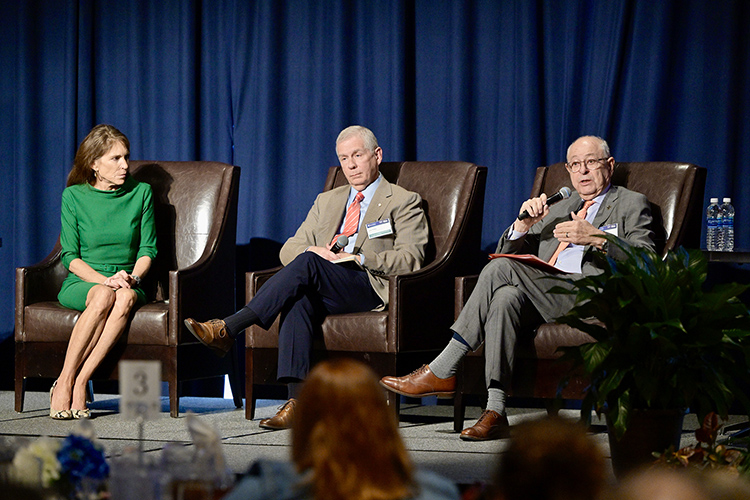
Mayors: ‘Let us do what we need to do’
Following Skipper’s presentation, Plazas then brought the three mayors to the stage to discuss the challenges that growth and development are bringing to the 10-county Midstate area that is home to 1.67 million residents, 27% of the state’s population.
He asked the area leaders a series of questions, starting with “Does growth pay for itself?”
Mayor Paige Brown of Gallatin: “Depends on the kind of growth … Residences don’t develop in a vacuum. Other things spin off as a result of it.”
Brown went on to point out that Gallatin has tried to balance the challenges of residential growth by making sure it has a strong business and manufacturing sector that provides additional sources of revenue.
Mayor Joe Pitts of Clarksville: “The simple answer is no, next question,” he said, drawing chuckles from the audience. “We struggle, as most Middle Tennessee communities do, and the challenges that come with that.”
He shared an example of an annexation that was going to bring an additional $100,000 in property tax revenue. “That’s one police officer, by the time you hire them, pay them, benefits, outfit them — that’s one police officer. Then you have to provide fire service and those services that go along with it. … No, growth doesn’t pay for itself, but it does bring opportunity.”
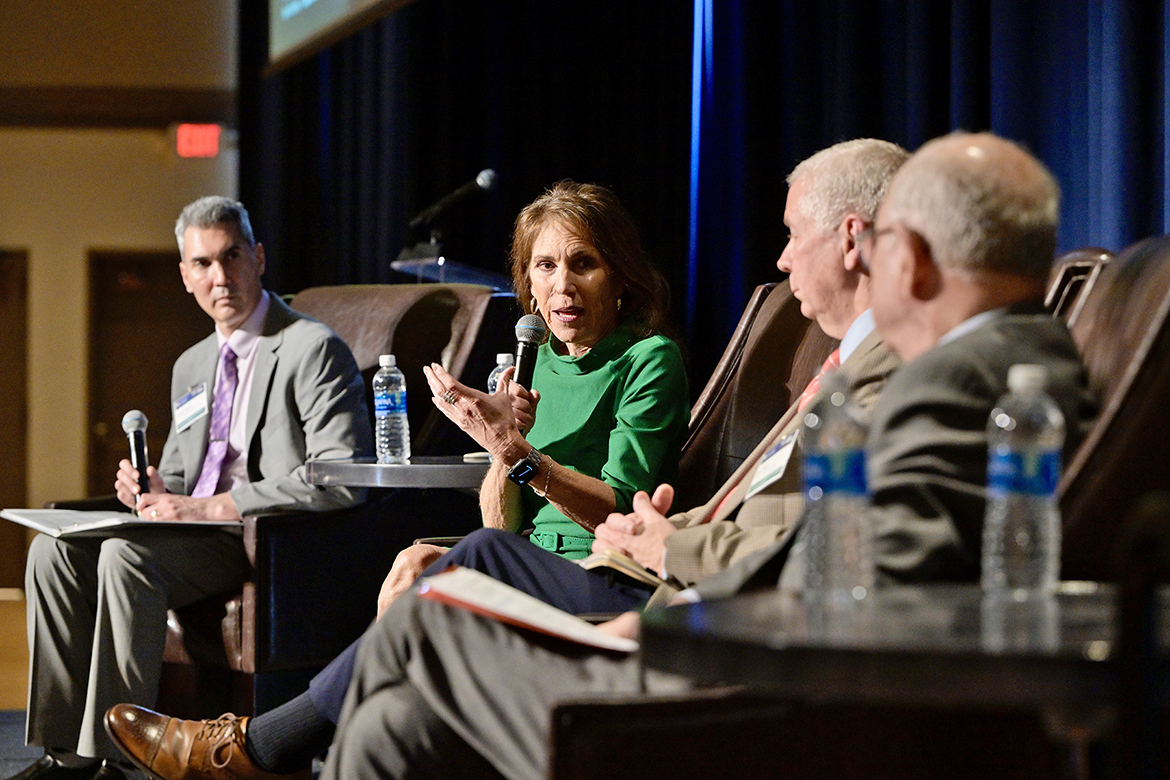
Mayor Ken Moore of Franklin: “No, I’d say that it doesn’t. … Was ask the developers to pay for the infrastructure required for the development, but there’s so many other impacts that they have on our communities that we’re not able to pass on to them. Eventually maybe we catch up, but it’s hard.”
On a question about what state lawmakers could do to assist them, all the mayors agreed that the Tennessee General Assembly is hamstringing local mayors and their communities with “preemption” legislation that severely limits what local governments can do to recoup the costs that arise from growth and development.
“If they would just leave us alone and let us do what we need to do for our communities,” Pitts said.
“I really agree on the preemption aspect of it,” said Moore. “The General Assembly doesn’t like Washington telling it what to do. We don’t like them telling us what to do. We feel like we best know what’s important locally and let us make those choices.”
He added that the state should rethink how it pays for road construction and maintenance from “pay as you go” to some other structure “because we’re constantly behind and can’t keep up. … Maybe we do need to consider debt or bonding on some of the projects long-term.”
Moore also said the state has taken away tools to incentivize developers to build “more affordable housing” for the workforces in their communities.
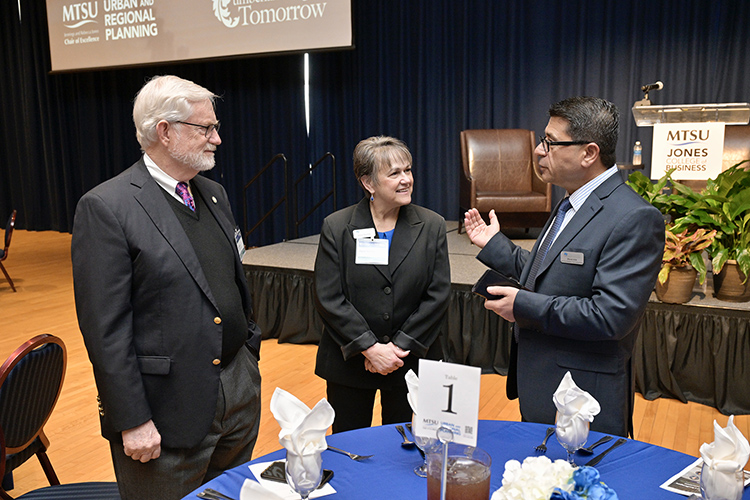
Brown said that while she’s thrilled to see the job growth that has come to the Midstate, she wished the state would in turn share more of the surplus funds that state officials boast about “because it’s the local communities that are shouldering the burden and accommodating those people and helping them have a place to live. And I don’t think they (state officials) understand.”
The mayors also agreed that it’s difficult finding enough revenue streams to pay for growth because of limitations at the state level as well as not wanting to put up cost barriers to promote further growth and development.
“It’s this delicate dance that we have to make sure we’re exhausting all options,” Pitts said. “That’s why if we could just get the General Assembly to see that we have so few options and not take those away.”
On the transportation front, the mayors agreed that a regional approach is needed, but that the necessary planning and local commitment isn’t there yet, but alternatives such as mass transit and more pedestrian friendly communities need to be in the mix of solutions.
“I wonder at what point it starts affecting people’s desire to live here?” Brown asked. “It really does affect the quality of life.”
They all applauded Nashville Mayor Freddie O’Connell’s plan to pursue a dedicated funding source to address the city’s transportation needs.
About the co-hosts
Established in 1997, the Jones Chair of Excellence in Urban and Regional Planning seeks to promote applied research and service focused on regional and urban planning, provide a forum to generate discussion and solutions, and support the on-campus development of curriculum materials and faculty more conversant with the issues of the region.
Current chairholder is Murat Arik, who also serves as director of MTSU’s Business and Economic Research Center. The chair position focuses on research and service to the Nashville and Clarksville metropolitan statistical areas, but Arik said he wants to serve as a resource for the broader community in Middle Tennessee counties.
Formed in 2000, Cumberland Region Tomorrow “works to inspire responsible growth the 10-county Nashville region through education, conversation, and collaboration,” according to its website, as well as “facilitate the regional discussion on growth, identifying best practices and encouraging collaboration for action.” Learn more at https://www.yourcrt.com.
— Jimmy Hart (Jimmy.Hart@mtsu.edu)

COMMENTS ARE OFF THIS POST